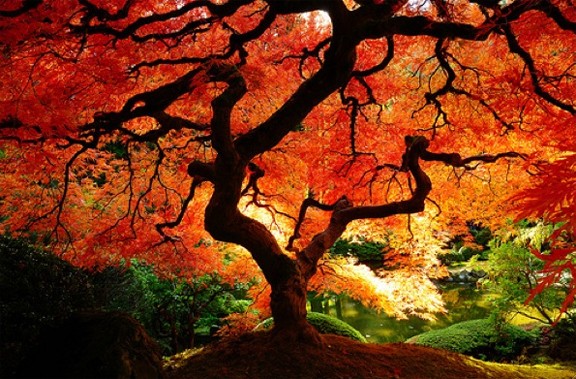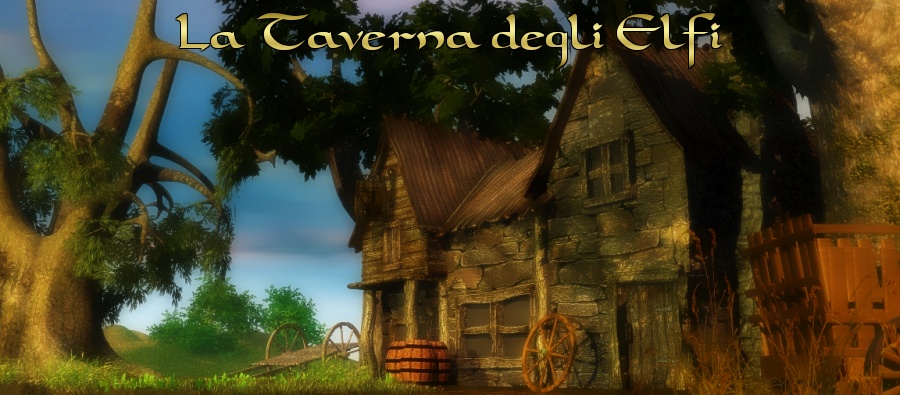
"The Fairie folk
live in the oaks,
and the acorn will
bring you good luck"
Nature was the earliest companion of primitive mankind. She provided the bounty by which our distant forbears could shelter and survive. In return for her abundance, humankind revered Nature and the earliest religions rose to worship her bones of stone and mountain, her raiment of field and forest and the Moon Goddess who was reflected in her sparkling streams and seas.

The Birch tree is a deciduous tree with white or grey bark.
As the birch is one of the earliest to gain its spring leaves, it is the tree of youth and the new year and its birch rods were used to drive out the spirit of the old year.
The birch is a tree of love and wreaths of birch are woven as love tokens, its trunk used for the maypole. Like many trees with protective properties, birch boughs over cradles and carriages protect infants against the glamour of the Little People.
Birch twigs were one of the three woods used in the witch’s besom. Bound to the handle, the birch broom represents the Goddess in maiden form. Birch represents the letter “B” in the ogham alphabet and the first tree month extending from December 24 to January 24.

The Hawthorn or Whitethorn a low-branching deciduous tree which blossoms into a snowy cloud of tiny flowers in May.
The hawthorn or “thorn bush” is the tree of May and it figures prominently in Beltaine celebrations. Strips of clothing and tokens are tied upon the tree in propitiation to the Goddess. The hawthorn, especially a solitary tree, is considered a fairy tree and it considered highly unlucky to cut down or otherwise disturb the tree except for the plucking of branches on May eve.
The hawthorn represents the letter “H” in the ogham alphabet and the sixth tree month from May 13 to June 9.

The Willow is one of the first trees to leaf out and one of the last to lose its leaves in the fall. A willow tree can grow 50 to 70 feet in height in moist soils.
The willow tree is the tree of enchantment, sacred to the Moon and the Goddess in her aspect of death leading to spiritual rebirth. To those who practice the Elder Religion, “willow (wicker)” and “Wicca” are thought to be derived from the same root meaning “to bend”, or “to be pliant.” Long used for medicinal purposes, salicylic acid is derived from the willow tree and baskets and other products woven from its flexible branches.
The willow, as crone, is the third wood of the witch’s besom, being the flexible bark, which binds the maiden birch rods to the mother ash handle. The willow represents the letter “S” in the ogham alphabet and the fifth tree month from April 15 to May 12

The Oak is a wide-reaching deciduous tree that can reach heights of 40 to 60 feet.
A long lived tree, the oak was favoured by the fairy folk, Celts and the Druids for its wisdom, strength and the phallic attributes of its acorns. It is thought that the word “Druid” derives, in part, from the root “dru” meaning oak. Sacred to the consort of the Goddess, Cernunnos, and to the Oak King at midsummer, it is said that the wizard Merlin was sealed into the hollow trunk of an oak tree.
The oak represents the letter “D” in the ogham alphabet and the seventh tree month from June 10 to July 7.

Holly is a densly foliated tree that can grow to 50 feet in height and 40 feet in width. Dark green leaves accented with red berries decorate this slow growing tree.
Holly is the cloak of the ancient Holly King, monarch of the waning year, who duels eternally with the Oak King, lord of the waxing year. The holly log is a traditional Yule log, its burning signifying the end of the reign of the Holly King. Holly is also the tree of the mythic Green Knight whose club was made from it.
The holly represents the letter “T” in the ogham alphabet and the eighth month from July 8 to August 4.

The Ash tree is a large deciduous shade tree with grey-brown bark furrowed in diamond patterns.
Ash is the tree of rebirth, of protection and divination.
Ash represents the letter “N” in the ogham alphabet and the third tree month from February 18 to March 17.

The Alder Tree is a somber deciduous tree with dark bark, which is most comfortable along waterways and streams.
When cut, alder wood turns from white to red and felling of a sacred alder was considered taboo. Dyes were made from its bark, twigs and flowers.
When cut, alder wood turns from white to red and felling of a sacred alder was considered taboo. Dyes were made from its bark, twigs and flowers.

The Hazel tree is an enormous shrub that can grow into a small tree which may reach 20 feet high and wide.
The hazel is the tree sacred to fairies, poets and seekers of wisdom. W. B. Yeats felt that the World Tree was a hazel. Hazel rods were formed into wands and divining rods and there was a taboo upon burning hazel wood.
The hazel represents the letter “C” in the ogham alphabet and the ninth tree month from August 5 to September 1.

The vine is often replaced by the blackberry in Celtic mythology. It says blackberries cannot be gathered after October 31, and are abandoned to the pooka. The vine and the ivy are both plants that grow spirally. From this growth pattern comes the belief that the vine and the ivy are plants of reincarnation. The vine is considered a “tree” of rebirth, joy and exhilaration.
The vine represents the letter “M” in the ogham alphabet and the tenth month from September 2 to September 29.

The Ivy is an evergreen, woody- stemmed perennial which, once established, grow rapidly.
Like the vine, the ivy is considered a tree of reincarnation and eternal life due to the spiraling pattern of its grown. The ivy and vine are often mixed metaphorically.
The ivy represents the letter “G” in the ogham alphabet and the eleventh tree month from September 30 to October 27.

The Dwarf Elder is a reed plant, the type of which was and is used to thatch houses. The reed is the symbol of sovereignty and power and it represents the letter “P” in the ogham alphabet and the twelfth tree month from October 28 to November 24.

The Elder tree is a large, scruffy bush that may grow into a small tree of 20 or even 30 feet in height. It has bright green leaves and purple-black fruit, which can be made into jellies and wine.
The elderberry is favored by the Little People and solitary elders were considered to be fairy trees. Because it is considered an otherworldly dwelling place for spirits, an elder is especially potent when grown in a churchyard.
The elder log is considered a token of the underworld hag, Hecate. Burning of the log is thought to summon spirits. As the elder is the tree of the thirteenth month it is considered to be an unlucky tree and is often avoided.
The elder represents the letter “R” in the ogham alphabet and represents the period from November 25 to December 22.

The Silver Fir at its best is a magnificent, noble conifer reaching heights of 50 feet.
The Fir is sacred to the Moon and is a tree of hope.
The fir represents the vowel “A” in the ogham alphabet and it represents the birth of the divine child (the day of the winter solstice).

Furze is a scrubby, throne bush that flowers a brilliant golden yellow.
Furze, by virtue of its golden flowers is associated with the sun, which returns at the winter solstice along with the Oak King.
Furze represents the vowel “O” in the ogham alphabet and it marks the growing sun at the vernal equinox.

The trees provide us with the very oxygen that we breath, they are indeed “trees of life.” Knock on wood, may these woody spirits favor us for eons to come
Beloved, gaze in thine own heart,
The holy tree is growing there;
From joy the holy branches start,
And all the trembling flowers they bear.
( The Two Trees, W. B. Yeats.)
( C. Austin ,The Wisdom of Trees)
